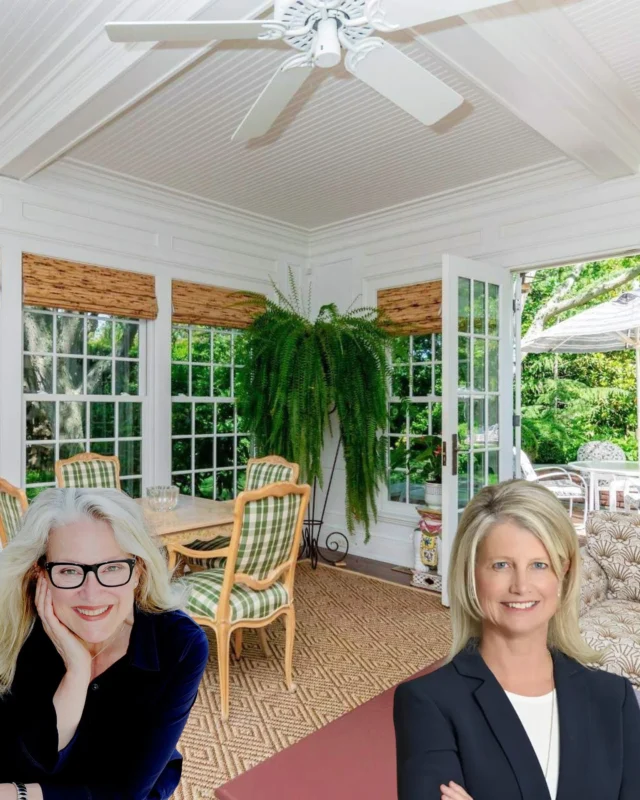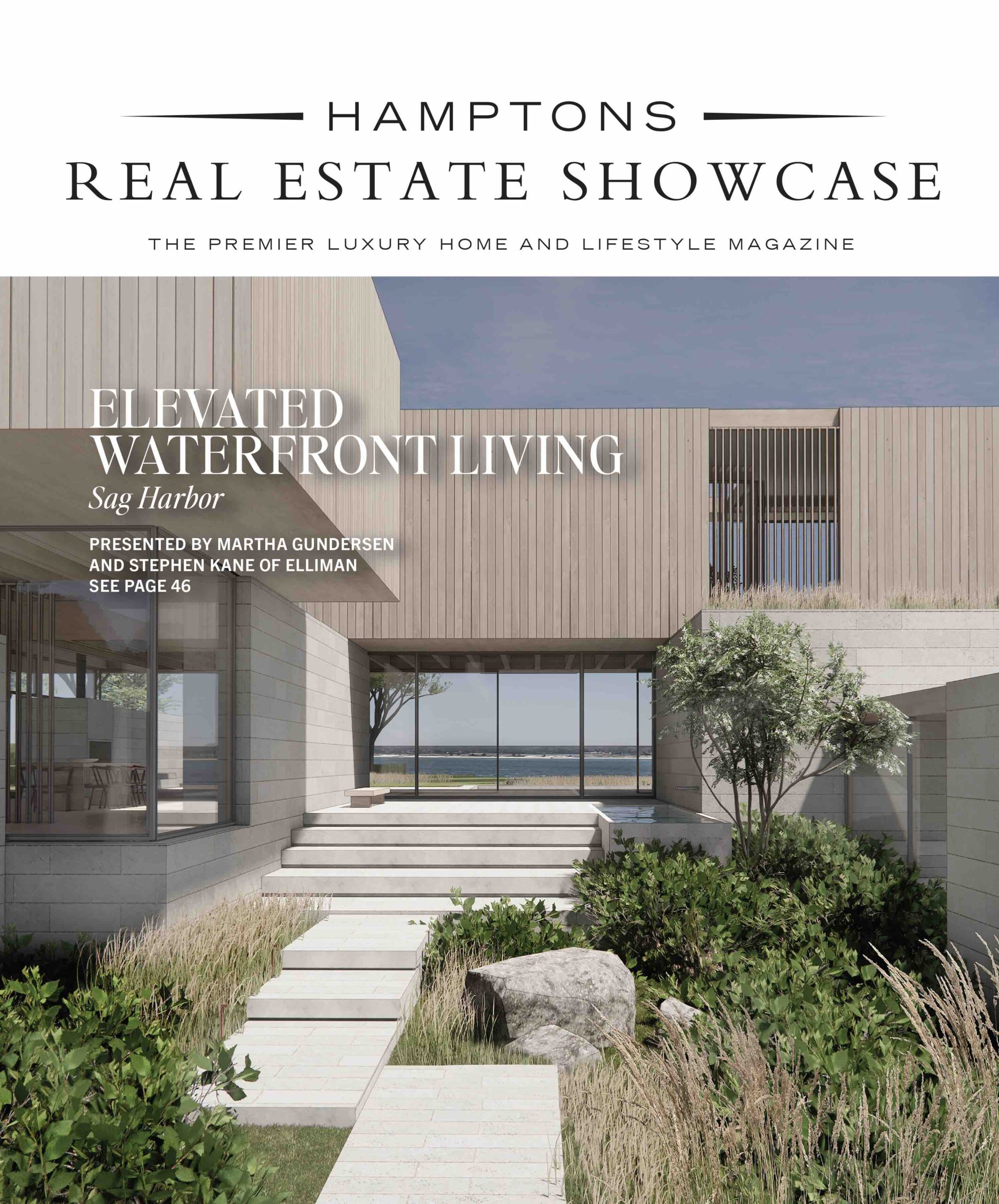 The East Hampton-based landscape designer Geoffrey Nimmer sees his work as akin to choreography, one that has much in common with the spare sensibilty of modern dance. For Nimmer, the correlation between the two is not random. For much of his twenties and well into his thirties, Nimmer, a tall, long-limbed, graceful man, danced with the Lucinda Childs Company and Robert Wilson.
The East Hampton-based landscape designer Geoffrey Nimmer sees his work as akin to choreography, one that has much in common with the spare sensibilty of modern dance. For Nimmer, the correlation between the two is not random. For much of his twenties and well into his thirties, Nimmer, a tall, long-limbed, graceful man, danced with the Lucinda Childs Company and Robert Wilson.
“A choreographer I used to worked with a lot always spoke of ‘touching the space,’” says Nimmer from the grounds of a small East Hampton garden on which he has been asked to consult. “I like that idea very much, and I think it’s an apt metaphor for the landscape designer’s task. As in choreography, you’re creating patterns and rhythms, as well as considering the relationship between objects and the play of light.”
To say nothing of the relationship between the environment and its native plants, he would surely add. Nimmer is best known for his low-maintenance organic lawns and his creative use of indigenous plant species. For a house in Wainscott, he created a giant meadow that is bright with native plants and flowers. Eight months out of the years, echinacea, pye weed, little blue stem grass, ironweed, Queen Anne’s lace, and butterfly weed bend and sway in great drifts. “It’s a pollination garden,” he says, “so you have lots of bees and butterflies flitting about. And the garden cuts a swathe through the property so it’s also a lawn substitute.” (To the owner’s delight, Nimmer removed 1,500 square feet of the latter.) And it’s impressively low maintenance, requiring only selective weeding, mulching, and a bit of staking in the spring. In the winter, he doesn’t cut anything back in winter, leaving the birds to deal with the seed pods. “In general, we just let it go!” he says.
But Nimmer also designs gardens with a more minimalist aesthetic. Recently, he did a Japanese-influenced landscape for a small house in Sagaponack that sits on half an acre of land. The entrance to the house features big irregularly-shaped bluestones set in a tall fescue lawn. Since the lawn is organic, it only gets mowed once a month and the grasses grow long and wavy and fold over themselves in wavelike formation. Also on the property are interesting specimen trees such as the topiary black pine that heralds the entrance to the property; a weeping Atlas cedar that grows sideways; a vitex; and some other unique cedars that the landscape designer “limbed up.” Nimmer says that the careful placement and care of these trees contribute to the feel of the property.
“All my work is a collaboration with the client and the space. And it’s my job to do what makes sense within the space.” Roses need lots of sunlight and sometimes a client will ask for rose bushes in a shady spot. When that happens, he will politely but firmly say no. “To acquiesce to something that is so patently wrong would go against everything I believe in,” he says.
Nimmer started his business thirteen years ago, designing rooftop gardens in New York City during the longeurs between dance gigs. One day he had a call from a renowned choreographer asking if he would be interested in reprising a role he had danced several years before. He thought about it for a minute and declined. When he put down the phone, he realized he wanted to fully commit himself to landscape design. After taking a degree in horticulture at UCLA, he went on to become the first estate gardener at The Watermill Center, the artists’ colony founded by Robert Wilson.
Turning his attention to the garden on which he is consulting, he recommends taking out a pitch pine that’s enclosed in a raised bed and whose branches graze the roof of the house. As a replacement, he suggests an hinoki cypress. “Love it’s structure, color, texture–everything.” He confers with the client about removing the raised bed, which he, Nimmer, feels is blocking the entrance. “If you took it out, you would enlarge the courtyard and create a more direct path to the house,” he explains. The homeowner balks, and Nimmer presses his case.
“I love the phrase, ‘the celebration of entrance,’ and I think you always want a gracious pathway to your home. I like to keep the front of the house really simple. I stay away in general from flowers and use the space as a foundation.”
While conventional landscape designers can chafe at the limitations imposed by working mostly with native plants, Nimmer sees it as a creative opportunity. “I try to use plant material that isn’t prone to pests or diseases. Hemlock, for instance, is susceptible to wooly adelgid so I forego them. It does require a shift in mentality on the part of the client, but the people I work with embrace the challenge. Gardening with native plants makes sense from the point of view of the environment and from a design standpoint as well. As a bonus, they tend to require less work. They’ve always been part of my aesthetic and at this juncture, I can’t imagine working without them.”
A few weeks later, Nimmer reports that plans are apace to plant an hinoki cedar in the front of the house. And in the back garden, he says, the client is thinking of putting in an organic lawn.














![Tucked along the shoreline of West Neck Harbor, this Shelter Island retreat offers a rare opportunity for relaxed waterfront living. ☀️⚓ With a waterside pool, deep water dock, guest cottage, and 220± feet of bulkhead frontage, every inch of the property is designed to embrace the outdoors. Inside, rich architectural details, sun-filled rooms, and elegant entertaining spaces blend comfort with character, making this a true summer escape.
37 East Brander Parkway, Shelter Island
Represented by Rebecca Shafer @myshelterisland of @thecorcorangroup [link in bio]](https://hamptonsrealestateshowcase.com/wp-content/uploads/sb-instagram-feed-images/515283061_18519694612030135_1293239383085970748_nfull.webp)




![A private Sag Harbor retreat with timeless elegance and space to roam 🌿 Set on 6.5± secluded acres, this beautifully designed estate offers over 8,000± square feet of refined living, with layered outdoor spaces, a 50-foot gunite pool and spa, and ever amenity needed for effortless Hamptons Living.
47 Middle Line Highway, Sag Harbor Represented by @theenzomorabito of @douglaselliman [link in bio]](https://hamptonsrealestateshowcase.com/wp-content/uploads/sb-instagram-feed-images/513860206_18518605354030135_4589361988158119558_nfull.webp)

